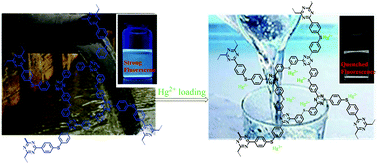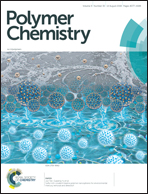Sulfur-rich covalent triazine polymer nanospheres for environmental mercury removal and detection†
Abstract
We describe a facile one-pot synthesis of porous covalent sulfide-bridged polytriazine nanospheres (NOP-28), which can be employed as highly efficient sorbents and at the same time act as selective sensitive sensors towards trace Hg2+. The as-made nanospheres were integrated with abundant thioether moieties, which are stable even under strong acid and base conditions, and they exhibit extremely high adsorption capacities (up to 658 mg g−1) from environmental sources such as water. Over 99.9% of the mercury was removed even at an initial concentration as low as 1.0 ppm despite their moderate BET surface areas. On the other hand, the π-conjugated NOP-28 features a strong photoluminescence that is distinctly quenched after trace Hg uptake. An excellent sensing performance is achieved in terms of high sensitivity (detection limit 12.0 ppb), excellent selectivity and real-time response for Hg2+. This study provides a new pathway for both removing and sensing toxic metals for the remediation of contaminated spaces, and suggests the great versatility of nanoporous organic polymers targeting various environmental challenges.



 Please wait while we load your content...
Please wait while we load your content...